The changes babies and toddlers go through are made up of different skills, like walking and talking. These skills, or Developmental Milestones, usually happen by certain ages. Although each child is special and develops at his or her own pace, watching to see when your child reaches these milestones can help you know how your child is developing.
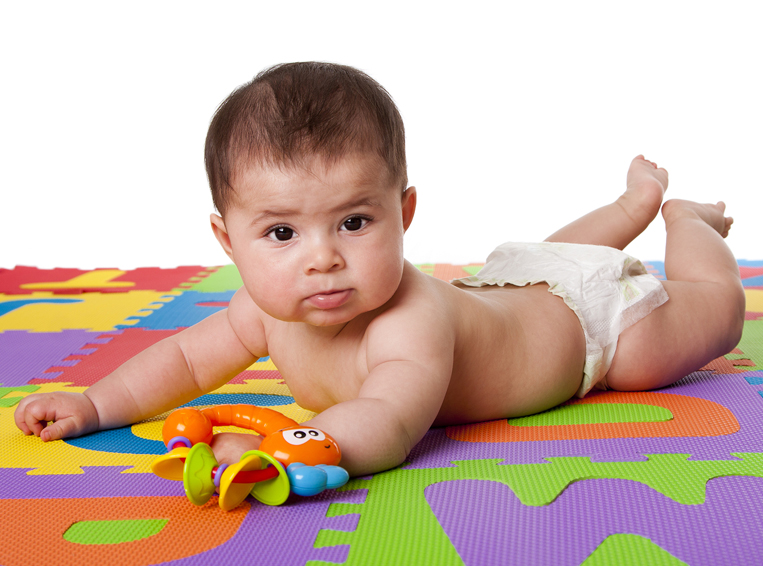
- Turn toward bright colors and lights
- Follow moving toys or faces with their eyes
- Recognize or know the bottle or breast
- Respond to loud or new sounds
- Reach for and grasp toys or hair
- Wiggle and kick with legs and arms
- Lift head and shoulders up while on stomach
- Smile back at parents or other family members
- Make sounds, like gurgling, cooing or babbling
- Reacts (jumps) to loud sounds
- Can be soothed by a familiar voice
- Makes verbal noises
- Will “talk” back and forth with parents
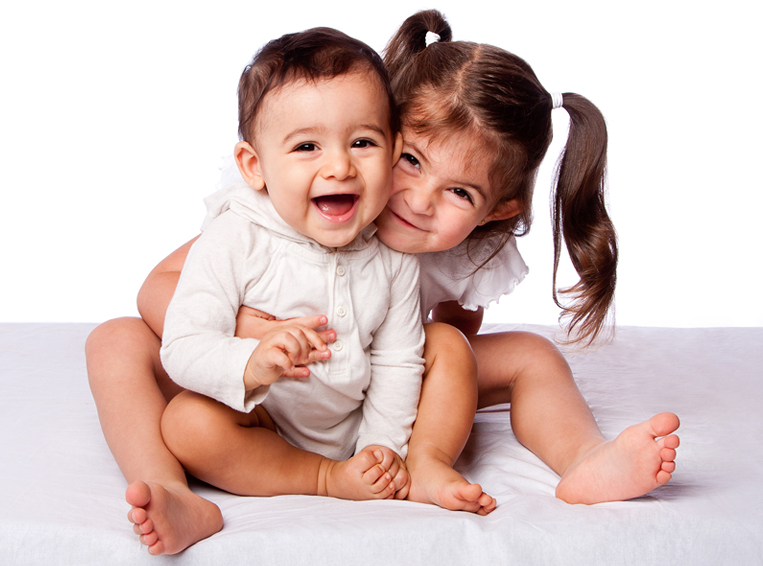
- Turn toward voices
- Reach for toys and pick them up
- Roll over front-to-back and back to front
- Play with their toes
- Help hold the bottle during feedings, if bottle fed
- Know faces of family members
- Babble, squeal, and repeat vowel sounds, like ooh, -ae, -e
- Sit by leaning on their hands
- Turns head toward interesting sounds
- Responds to quiet talking
- Will awaken to a loud noise
- Responds when you say baby’s name
- Enjoys rattles and other toys that make sounds
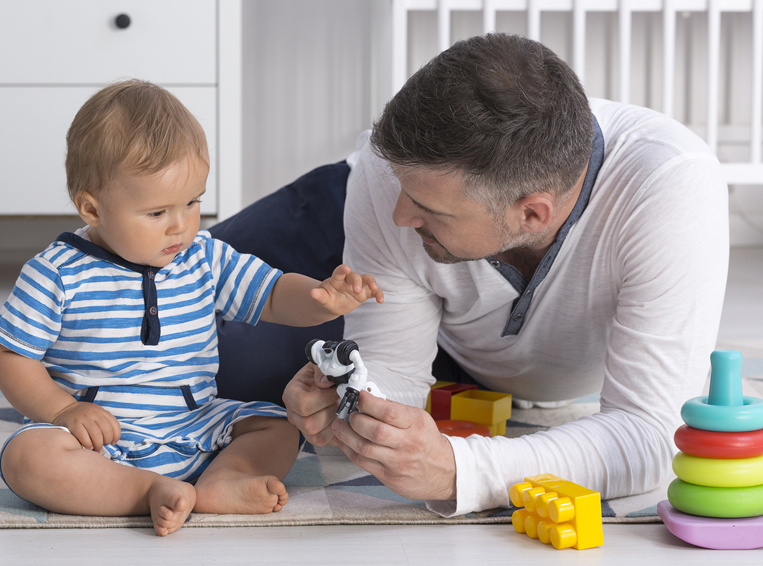
- Copy sounds or gestures
- Reach for crumbs or other small things with their thumb and fingers
- Move toys from one hand to the other hand
- Support themselves with straightened arms when on their stomachs
- Sit unassisted
- Turns head toward interesting sounds
- Responds to quiet talking
- Will awaken to a loud noise
- Responds when you say baby’s name
- Enjoys rattles and other toys that make sounds
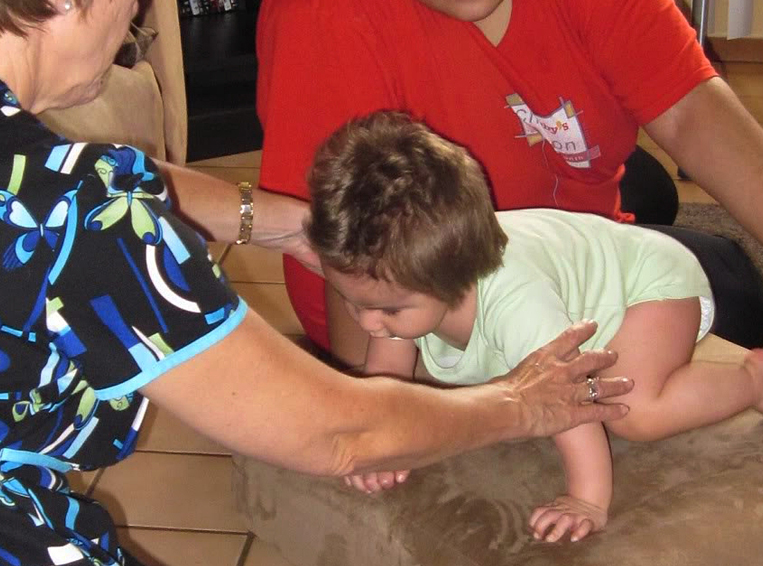
- Respond to their name
- May be scared of strangers
- Look for an object if you hide it from them, even if they can’t see it
- Crawl on hands and knees
- Pull themselves up to a standing position
- Walk by holding onto furniture
- Drink from a cup with your help
- Enjoy playing games, like peek-a-boo or patty cake
- Says 1 to 2 words
- Can point and look at familiar people or objects when asked to
- Uses voice to get your attention
- Begins to say simple words like “mama” or “bye”
- Imitates words you say
- Enjoys music
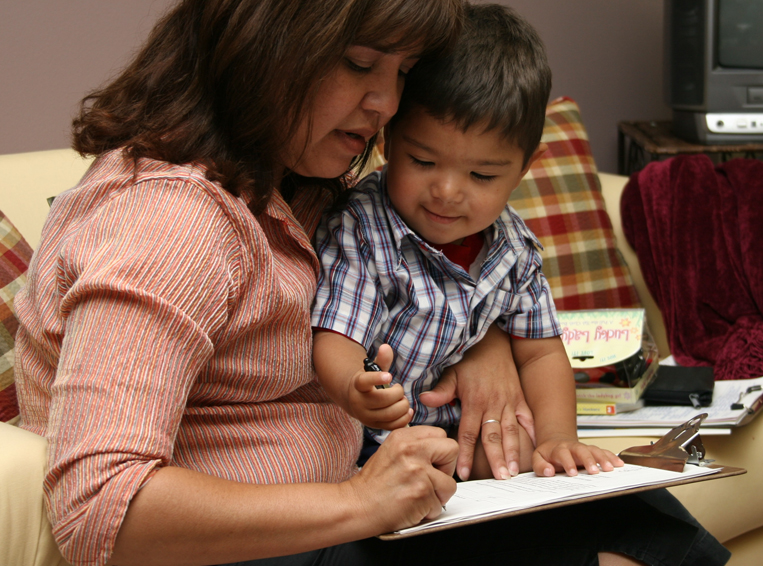
- Use gestures
- Like to look at pictures in a book
- Can hold a crayon in a fist
- Hand toys to you when asked
- Can point to pictures you name, if the things in the picture are familiar
- Walk alone without help
- Can point and look at familiar people or objects when asked to
- Uses voice to get your attention
- Begins to say simple words like “mama” or “bye”
- Imitates words you say
- Enjoys music
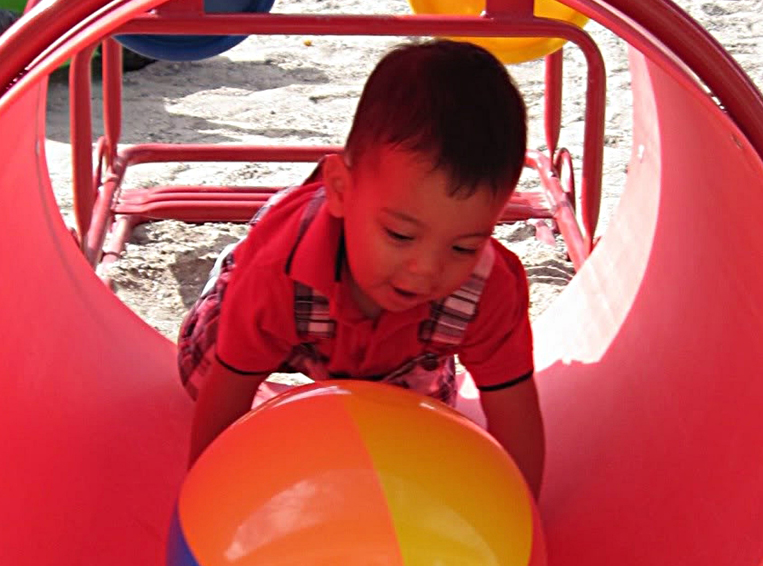
- Like to pull and push things
- Follow simple directions
- Pull off shoes and socks
- Feed themselves sometimes
- Step off low objects and keep their balance
- Turn 2 to 3 pages of a book at a time
- Can point to one body part
- Can name one object
- Like to copy your words or actions
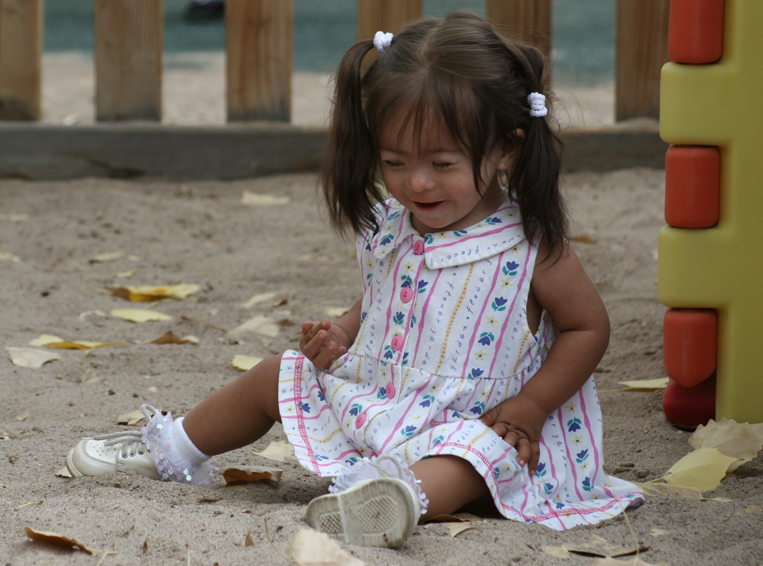
- Can name 2 objects
- Like to pretend-play
- Can put together a simple picture
- Puzzle if it has only 2 or 3 large pieces
- Like to throw balls
- Like to play alone with toys for a short time
- Says “No” a lot
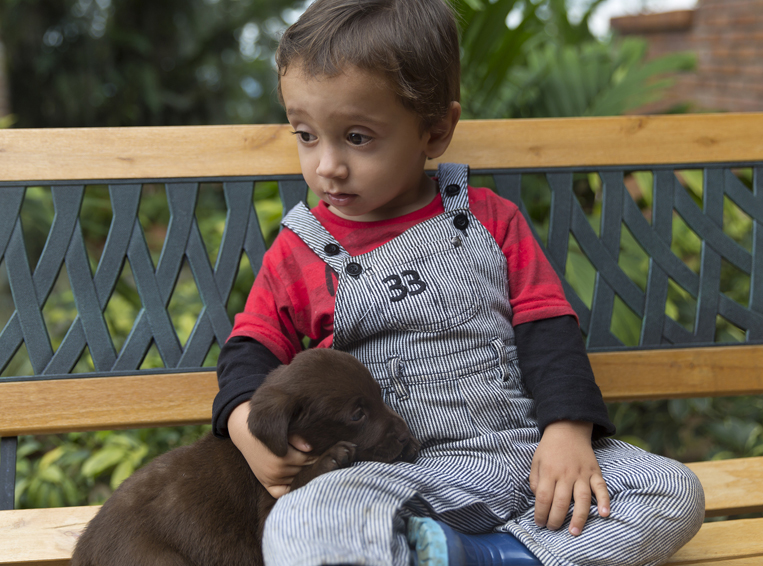
- Use 2 to 3 words together, like “No, Mommy” or “More cookies”
- Say names of toys and people
- Feed themselves with a spoon
- Turn one page at a time
- Point to hair, eyes and nose when someone asks them
- Show affection to family members and pets
- Run short distances without falling
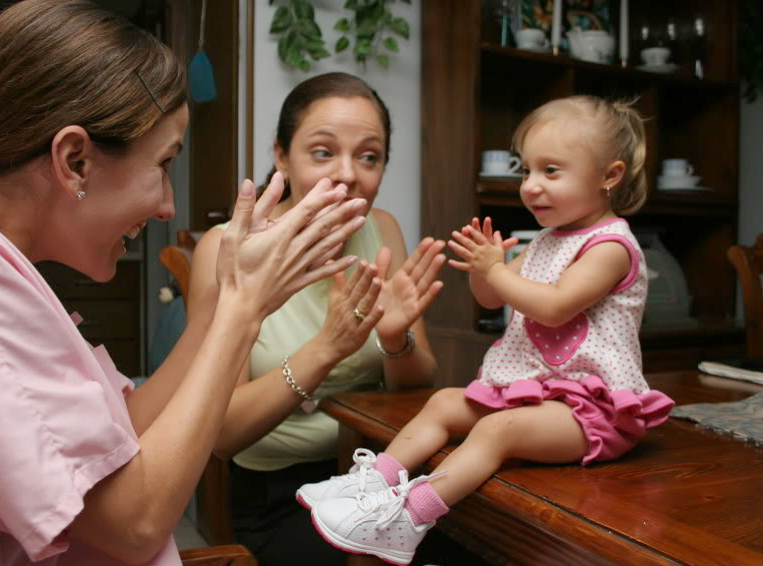
- Answer simple questions
- Walk up steps, alternating feet
- Put their clothes on by themselves
- Open simple containers
- Like to play with other children
- Repeat simple rhymes and songs
- Use 3 to 5 word sentences
- Name at least one color correctly
- Jump in place
- Express their emotions
Red Flags
There are behaviors, or red flags, that can prevent your child from learning. If they happen often, contact ECI.
Downloads
Here are some helpful documents available for download:
Hearing
3 out of every 1,000 babies are identified deaf or hard of hearing. About half of those babies will have no signs or risk factors


